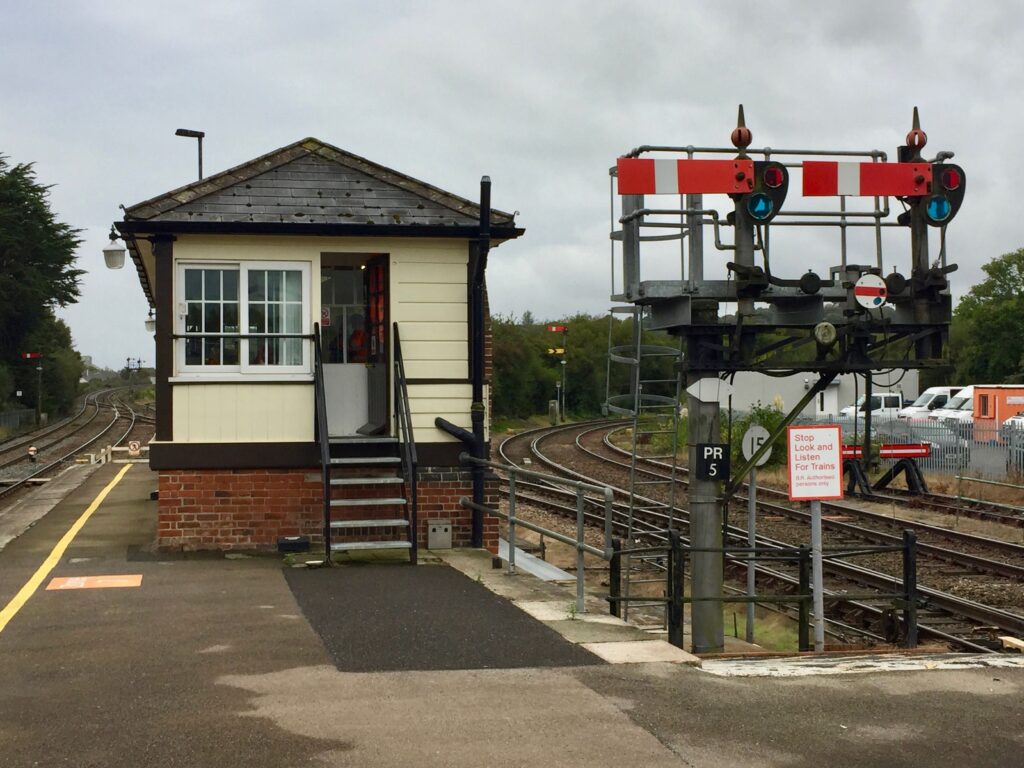Halfway between Littleborough and the western portal of Summit Tunnel lies a little-used trailing crossover.
Littleborough marks the traditional boundary for Greater Manchester. Venture further east and you’ll be through the tunnel to arrive in West Yorkshire. In reality, Littleborough is no boundary as trains for east and west hustle through.
It’s hard to isolate Greater Manchester’s services if there’s a problem east of Summit Tunnel. Littleborough crossover would be useful but only a local operator can use it from an adjacent groundframe. Reaching this frame is hard. There’s a footpath nearby but no roads.
Preston powerbox controls the groundframe’s release rather than nearby Rochdale West signalbox. This makes it harder to turn trains back at Littleborough when operational needs demand it.
I can’t imagine Littleborough is the only example of a minor matter making it harder to run a railway. I only know of it because of the local rail user group, STORM. It’s a good example of local knowledge that remains vital to effectively run trains. Littleborough crossover is an example of a railway on which engineering has trumped operations.
Changing emphasis to operations
Judging by Network Rail Chief Executive Andrew Haines’ recent words, that should change. Haines is a railway operator. He knows that his customers want a punctual and reliable railway. He sees NR as a service company not an asset management or engineering company. Of course, it must maintain and renew its assets and that demands engineering knowledge. But railways exist to carry goods and passengers. Not to employ engineers. NR has skewed so far from operations to engineering that its professional head of operations reports to its chief engineer.

I welcome his decision to place more emphasis on railway operating and operations. Haines said recently: “In the months since I joined Network Rail last August I’ve been very open that I took this job because I want to put passengers first and deliver a better, more reliable service. Because I believe a renewed focus on the end users of the railway, which of course includes freight, is the very best chance we have to restore confidence in our industry and our competence.”
I daresay he could operate Littleborough groundframe if needed but I wonder how many other senior railwaymen retain or ever had this ability? There are others but they’re becoming fewer. They need these skills because I suspect there’s an art in senior managers knowing how to restore a disrupted railway.
Haines reckons that as Network Rail was forced to become more efficient it was operations that bore the brunt of savings rather than engineering. That’s no real surprise after Hatfield’s fatal accident caused by a broken rail in 2000 or the fatally faulty points at Potters Bar in 2002 and Lambrigg in 2007.
Crowding exposes neglect
When fewer trains ran, this trade-off worked. As timetables became more crowded, the gradual devaluation and neglect of operating skills became more apparent. Haines explained the problem in January. He said that operating had no formalised training or clear competence standards that created a career path. Apprenticeships didn’t have the rigour of NR’s maintenance equivalent.
Haines’s final example was to note that NR doesn’t systematically rehearse and simulate incidents to allow operations teams to practice their response. He said that this was becoming more important because, with fewer incidents today, there’s less opportunity to solve them.
It’s vital that railway managers practice how they react to incidents such as Lewisham’s in March 2018 where one train after another failed in icy weather and passengers climbed down onto a live railway.
London Bridge operations
At London Bridge, a joint team of NR and train operators made many small changes to make their railway run more smoothly. They changed timetables and altered train headcodes so they give better information to signallers. They increased dispatch staff to cope with a rise in simultaneous departures.
Haines hinted that he’s not happy with timetabling being centralised in Milton Keynes. It has “cemented the divide between those who plan changes to the timetable and those who operate it on a daily basis and can, if given the chance, often spot problems before they happen”.
In an age of networked computers, it should be easily possible to switch timetabling to NR’s routes to be closer to its customers. Such a switch comes with the same risk as when NR centralised it and that is that skilled staff leave for other jobs.
Challenges in Manchester
Centralisation did Manchester few favours when Ordsall Chord opened. As Haines said: “Nobody really looked at how we would reliably operate 15 trains an hour, across six flat junctions in the space of a few miles, with disparate rolling stock, much of which will have travelled for several hours.”
Ordsall Chord is a fine example of today’s complex railway. On one level, those six flat junctions lend themselves to an answer developed using local operations knowledge. On the other, they carry freight from Felixstowe or Southampton. Some carry passenger services to Scotland and North East England. The chord exposes the folly of setting service patterns before providing the infrastructure they need. Ordsall Chord shows that the railway is a network with many strands in which nothing is fixed until all is fixed.
Railway operations bridge the divide between track and train. When privatisation created that split, it meant the end of broader operating careers that was running a railway. Joining them together to form a good operations career should not be impossible but it will demand selfless co-operation between track and train companies. But as Haines said: “We haven’t developed as we should have done a pipeline of world class operations talent or cultivated ops as a profession to rival any of the others within the industry.”
This article first appeared in RAIL 873 on February 27 2019.